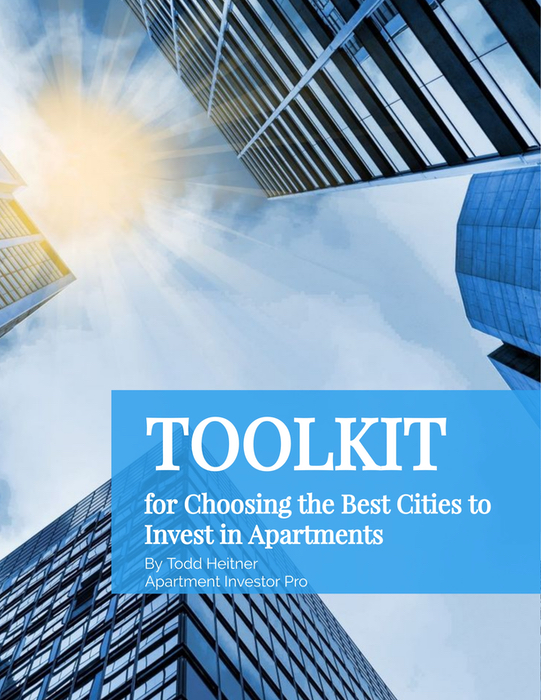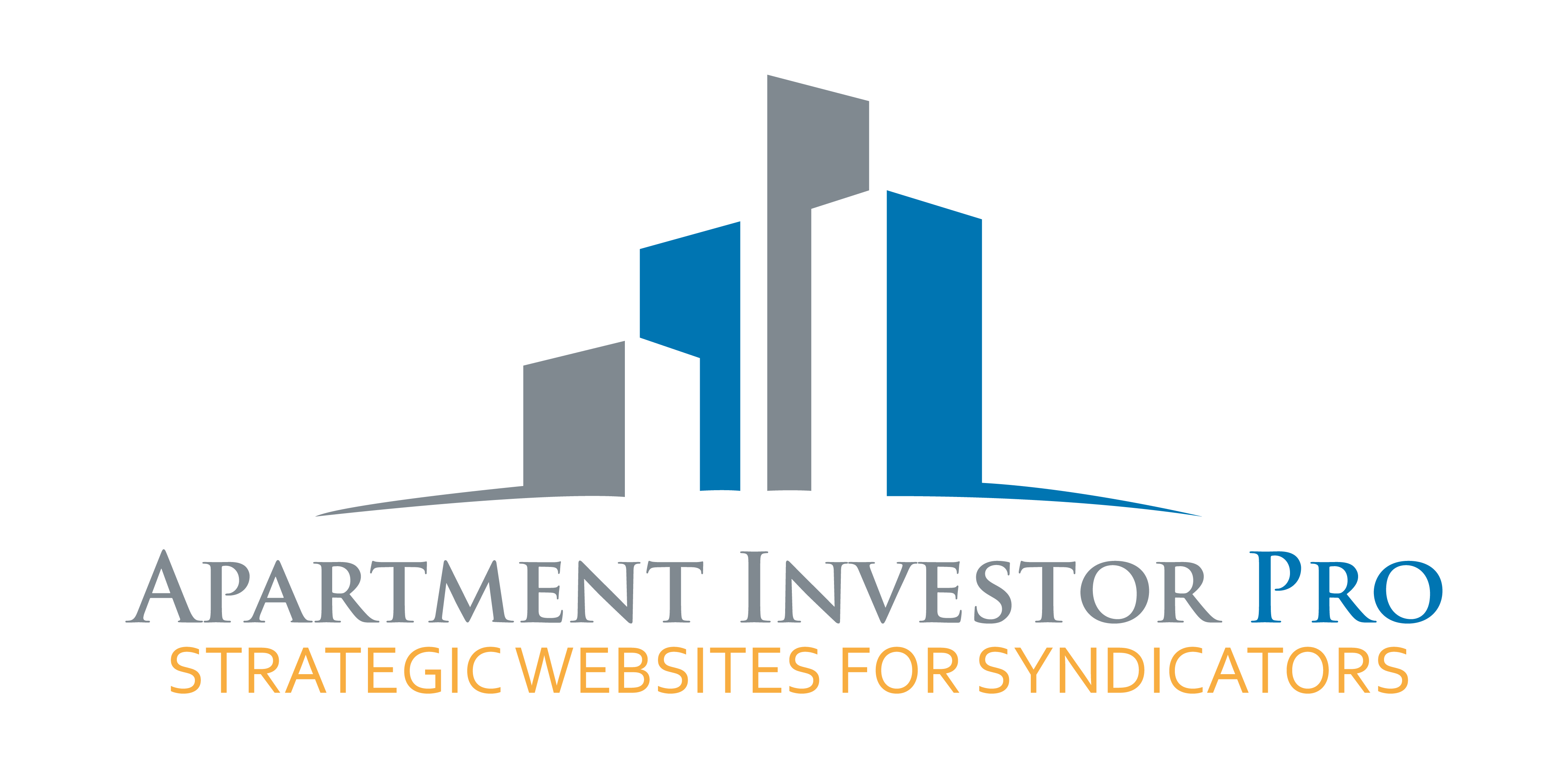One of the most common questions apartment investors ask is, “How do I choose the best cities to invest in apartment buildings?”
It’s a big question, and a big financial decision.
If you’re not sure how to answer this question, here are some issues you’ll run into:
- You’ll get stuck in analysis paralysis. You may drag your feet and miss out on a good opportunity.
- You turn down a great deal. You’re not familiar with the city so you turn down a deal that could have made you a lot of money.
- You invest in a bad deal. A deal comes along that’s too good to pass up. You invest in it, only to realize later that the city had issues you weren’t aware of.
How can you invest in apartment buildings in a city you’re not familiar with without constantly second-guessing your decision?
How can you find cities with hidden potential that big investors aren’t looking at?
Short Answer: You learn what data matters and where to find it.
There are 5 key metrics you need to pay attention to:
- Population Growth
- Median Household Income Growth
- Median House or Condo Value Growth
- Change in Crime Levels
- Last 12 Months Job Growth Percentage
Before we dive any deeper, I want to give credit where credit is due. This information is based on the data-driven approach taught by Neal Bawa, a successful investor and syndicator.
Also, this list isn’t comprehensive, meaning there are other factors that could have an impact on whether an investment is good or not. However, these criteria are where you should start.
Some states are more tenant-friendly and others are more landlord-friendly. It doesn’t mean you can’t invest in a tenant-friendly state, but it’s worth knowing the laws when it comes to evictions, etc. If you’re not willing to deal with a state that favors tenants over landlords, save yourself time by not looking at deals there. (Later this month we’ll provide a resource to help you determine this).
Watch the video below as Neal Bawa goes deeper into each of these metrics and shares how he uses this data in his business to find hidden gems that most investors aren’t looking at.

Invest with confidence!
This Toolkit will help you:
- Find out if the city you’re considering is a solid investment or not.
- Do thorough research by giving you links to the resources you need
- Know what numbers matter and what ranges to look for.
OK, now let’s dig deeper into the specifics of what to look for with the 5 metrics mentioned above, and compare a couple cities to see how they measure up.
The Best Cities to Invest in – 5 Factors to Consider
1. Population Growth
Look for population growth between 2000 and 2017. Why not up to the current year? It’s usually not available, at least not for free. But it’s also not necessary since this time frame is enough to show the trend.
Cities between a quarter million and 1 million population should have a 20% growth or higher.
Cities under a quarter million should have 30% or higher growth. Cities over a million should have 15% or higher, and cities over 2 million should have 10% or higher.
Let’s compare a couple cities to see how they measure up.
Columbus, Ohio:
Population in 2017: 879,170
Population change since 2000: +23.6%
How does it measure up?
It’s between a quarter million and one million population, so it should have a 20% growth or higher, and it exceeds that. So it looks good on this metric.
Let’s check another city.
Charlotte, NC:
Population in 2017: 859,035
Population change since 2000: +58.8%
It’s in the same population range as Columbus so we’d be looking for the same 20% or higher growth. Charlotte well exceeds that.
Our Toolkit includes the resources you need to find this data.
2. Median Household Income Growth
You want to see that the average income is going up. You generally wouldn’t want to invest in an area that’s economically repressed because people will likely be moving out to find jobs rather than moving in.
How much growth should you look for?
Neal Bawa recommends 30% growth in the median household income.
This applies to cities of all sizes. For each year beyond 2016, add 2% growth to the 30% number (for example, 2017 should be 32%, 2018 should be 34%, etc.)
How do our two cities fare that we were using as an example, Columbus, OH and Charlotte, NC?
Columbus = +31%
Charlotte = +29.89% (is that close enough Neal?)
3. Median House or Condo Value Growth
Here we want to see that the value of homes is going up for the years shown. For example, you’ll likely see a comparison of 2000 with 2017. We want to see that the home values have gone up considerably. But how much?
You want to look for 40% growth, and that applies for cities of all sizes.
For each year beyond 2016, add 2.5% growth to the 40% number above (for example 2017 should be 42.5%, 2018 should be 45%, etc.)
That may sound like a lot, but it’s not as difficult to find as it might seem. Some cities in the U.S. are at 100% growth over that time.
How about our two example cities?
Columbus = +42% growth
Charlotte = +53% growth
They’re both still looking pretty good.
4. Change In Crime Levels
You want to see a decline in crime levels. An increase in crime would let you know the city has some issues. If a city has rising crime, people will want to leave it to go somewhere safer.
What numbers should you look for?
You want to see a current crime level of 500 or lower on the crime index.
You also want to see a smooth decline in the crime rate over the 2000 – 2018 (or latest year shown) time period.
This smooth decline indicates the trend will continue, which will have a direct, positive impact on home prices and rent growth.
This applies to cities of all sizes.
How do our two sample cities compare?
Columbus’ crime rate is 375.4 for 2018, so it’s under 500 like we want. Going back to 2005, the number has dropped gradually every year, so that’s what we’re looking for.
For some reason, Charlotte’s crime rate is not published on the site we’re using. It’s the only city I’ve found that’s not listed, so you’ll have to get crime info from other sources. From sources I found, it seems like crime could be an issue in Charlotte.
That doesn’t necessarily mean it’s not a good place to invest. Neal says you aren’t always going to get 5 out of 5 for these, but you want at least 3 or 4. In this case, if all the other numbers look good, you might check the crime rates for the neighborhood the property is in and see how that compares to other areas.
5. Last 12 Months Job Growth Percentage
Job growth is a good indicator that people are moving in and there is plenty of work, which means there is demand for housing.
The COVID-19 pandemic is obviously going to have an impact on job growth. But generally, what you want to look for is:
2% annualized job growth for cities under 1 million, and 1.5% for cities over a million.
One difference with this statistic is that you are only looking at the last 12 months of data.
It is important to take the entire 12-month period into consideration.
Examples of cities with excellent job growth stats that also meet the other criteria on this list are:
St. George, Utah
Boise City, Idaho
Kennewick, Washington
How about the two cities we’ve been comparing so far?
Columbus has a .86% growth as of March 2020 and Charlotte about 2% from Feb 2019 to Feb 2020 (pre-COVID-19).
You can sort cities by the percentage of job growth over the past year, which can be a great way to identify cities with potential.
Examples of cities to check out:
- Deltona
- Orlando
- Lakeland
- Sarasota
- Fort Myers
- Cape Coral
Neal Bawa talks about a geographical corridor of opportunity running south from Deltona, through Orlando, down through Lakeland and Sarasota down to Fort Myers and Cape Coral.
All of those cities are great cities to invest in easily making the grade for desirable cities to target for investment including the 2% or above annual job growth criteria.
Owning an investment property in Orlando, for example, continues to make good investment sense. Orlando is experiencing 7.2% population growth.
The city is also becoming a business center for young professionals and the annual job growth is around 4.4%.
Another factor that makes Orlando a desirable option for property investors is that Florida is a state with no personal income tax.
The Orlando housing market is often pointed to as a great start point for new investors because of its affordability.
This affordability coupled with increasing rental income equals healthy positive cash flow.
Check out resource #3 in the toolkit to look up these statistics for yourself.
Exceptions to the Rule
Of course there will always be exceptional deals that work for you as an investor that do not follow the formulas in the system outlined in this article.
For example, investing in your local region may not perfectly meet the criteria outlined here. But you may decide that your advantage in terms of local knowledge will give you the edge that you need. Or perhaps there is an x-factor that makes a certain property investment work outside of these parameters.
As a general rule, however, what will separate you from the pack as a syndicator worth your salt is a careful and analytical approach to your investment decisions, as outlined in this article.
Pay careful attention to selecting the area you wish to invest in and use the criteria outlined above as a guide.

Invest with confidence!
This Toolkit will help you:
- Find out if the city you’re considering is a solid investment or not.
- Do thorough research by giving you links to the resources you need
- Know what numbers matter and what ranges to look for.
A Vital Piece In The Puzzle
Of course, finding the greatest investment property in the world, in the best location in the world, will do you no good at all unless you can also convince brokers and investors that you are a serious player.
That is why a vital piece in the puzzle is to have an online face that boosts your credibility, dispels anxiety and promotes confidence. To do this you absolutely need a website that gives you a professional image and serves as the perfect online hub for all your digital marketing activity.
At Apartment Investor Pro we provide websites specifically designed for multifamily syndicators with all the graphics and content already prepared.
This means that you can immediately get your site up and running with no hassle and at a fraction of the cost.
To get started check out our website plans at Apartment Investor Pro.
